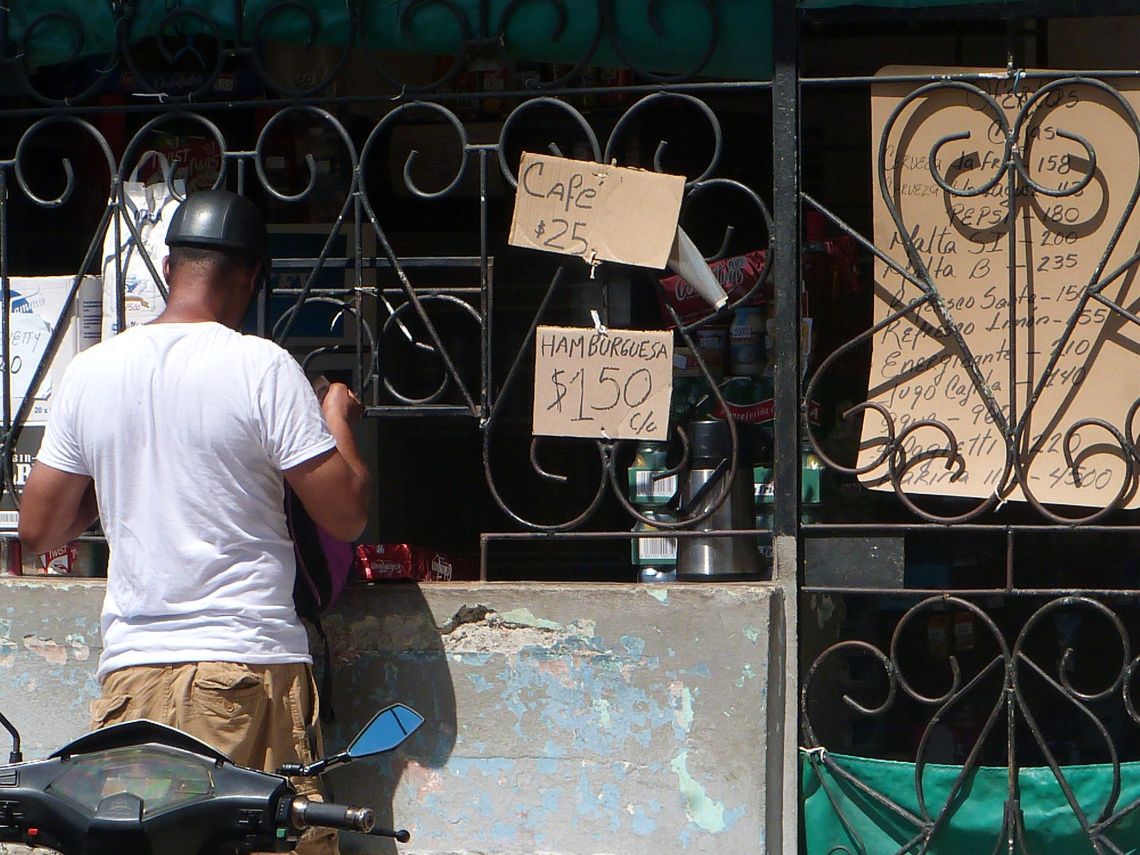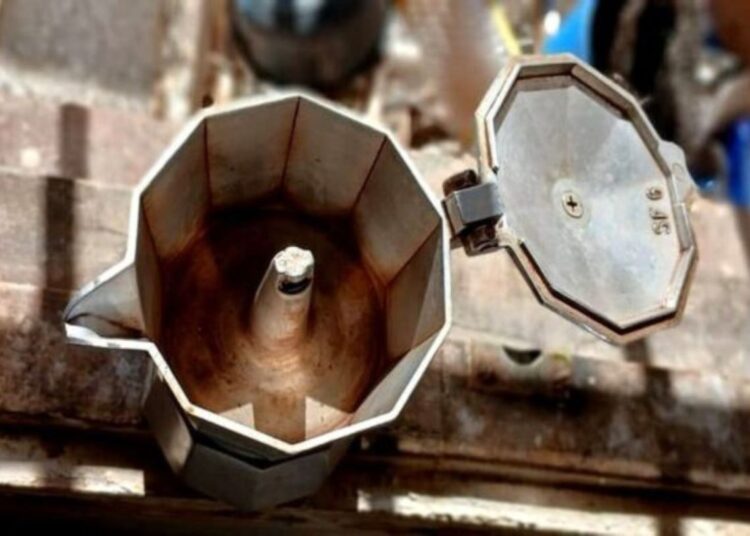“Before, it wasn’t easy. Now it’s almost impossible” (to have a sip of coffee), complains Professor García, showing on his cracked cell phone the reason for his displeasure: a ministerial report from weeks ago.
“Look, as if it were no big deal, what they’re saying…,” says García, citing the last sentence of a note from the Ministry of Domestic Trade published in early February on Cubadebate, which announced the “non-delivery of meat products, oil, and coffee.”
According to this former math teacher, jewelry welder, and taxi driver who retired prematurely due to an eye injury, the announcement made it into the monthly top ten of bad news for millions of Cubans.
Like everyone else, García doesn’t have many options, and his long-standing habit of smoking a cigar with a cup of coffee in the morning, just as his father and grandfather did all their lives, is dead and gone.
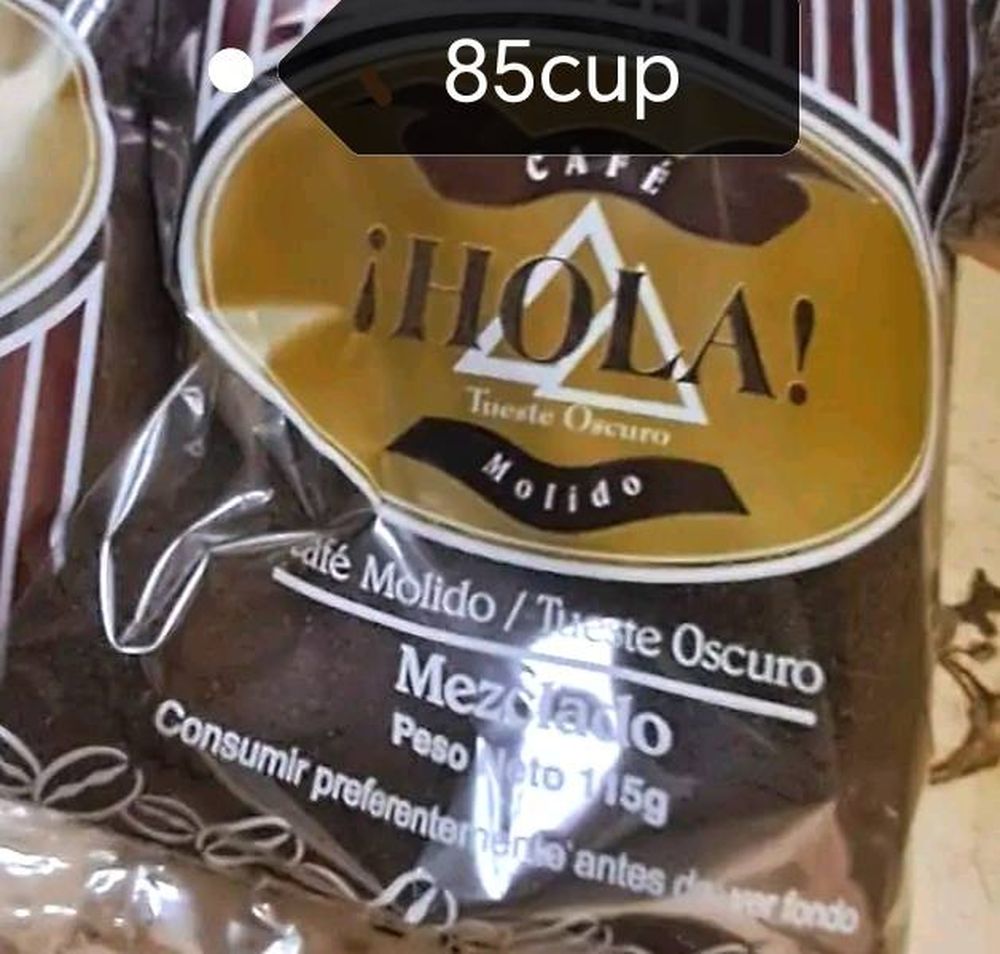
A new Hola coffee, but at market price
García has a small nest egg that, patched together in the informal market with financial fixes from “whatever comes along” and the occasional “salvage” from abroad, is enough for the bare minimum, including buying a pack of Hola coffee, “but not every week.”
“It’s not the one in the ration book. That one hasn’t come in since December,” he clarifies.
This is another Hola, presumably mixed with peas, just like the official one, packaged with the same design, but weighing less (115 grams for the original —11 CUP official price). It sells for 85 CUP at La Cuevita, the capital’s great bazaar of miracles, where you can find everything from an anxiolytic to a Soviet car body.
One of García’s neighbors goes there every two weeks to stock up on this product, which she then sells for 150 CUP per package on her doorstep, one of the many teeming the resale market.
Other offers on the informal market promise 1 kilogram of alleged Serrano and Cubita coffee for 1,500 CUP.
“I avoid watery coffee,” García states about the also alleged Hola. “At least, when really hot, it helps me get a buzz,” he says happily, while sharpening the machete he’ll use to clear a couple of parterres.
“200 doubloons each,” he says with a cultured mischievousness, adjusting the glove on his calloused right hand with delicate fingers after pocketing his 1980s Orient automatic watch with a green dial, “I wouldn’t sell it for anything in the world,” under a blue overall that flaps around his body like a banner in the wind.
Cigars, don’t even mention that. The worst of all, “those cigars that were sold on the ration book and that have also disappeared,” rose from 20 CUP to 150 CUP in a couple of months.
Cigars taken from factories for export or manufactured in clandestine cigar selling points, without bands, for 350 or 1 USD on the black market.
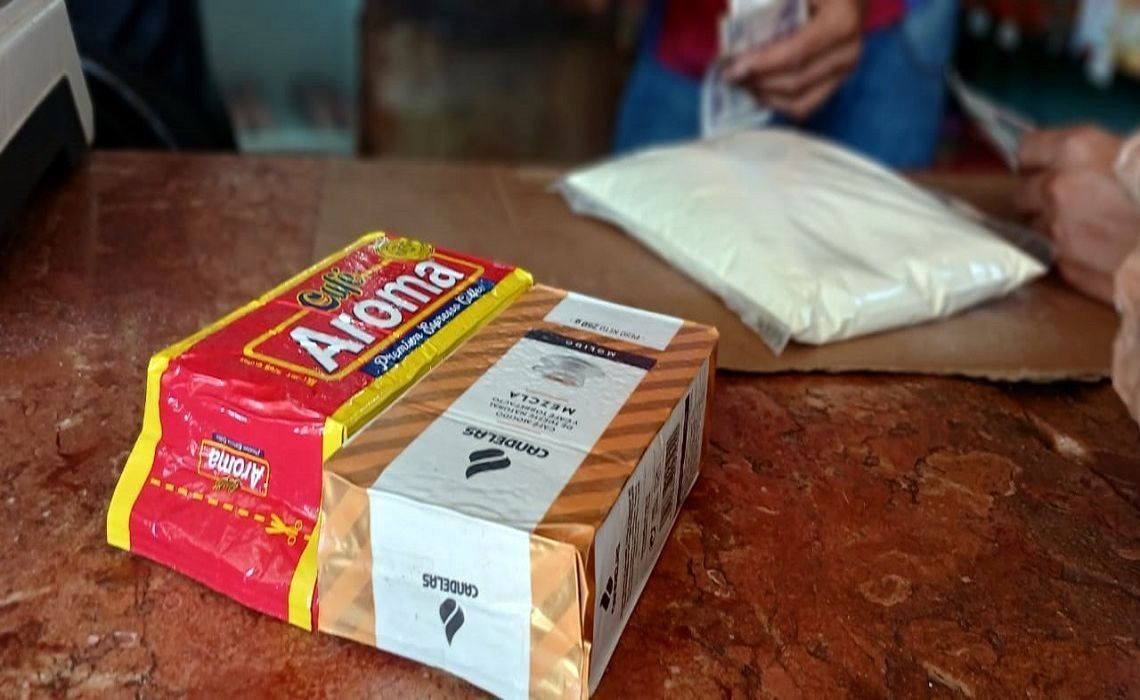
Explaining the disaster
Felipe Martínez Suárez, director of the Agroforestry Experimental Station located in the mountainous, coffee-producing municipality of II Frente in Santiago de Cuba, has an explanation for the disaster.
“In 1961, the country achieved a record production of 60,000 tons. But over time, the decline has been considerable, due to economic, environmental, and social factors, in addition to the intensification of the U.S. blockade.”
Martínez’s arguments appear in an extensive two-part report published last week in the newspaper Granma.
The article attempts to answer citizens’ questions about the shortage of coffee in a country that taught Vietnam how to grow it in the 1970s, which, half a century later, has made the Indochinese country the second largest exporter worldwide, behind only Brazil.
The weight of tradition, in the Cuban case, doesn’t seem to matter much. Since 1748, the year in which, according to historian Francisco Pérez de la Riva, seeds from Haitian coffee plantations were imported, the first coffee plantation on the main island was cultivated on a farm owned by Don José Gelabert near the town of Wajay, in the province of Havana.
Despite the decline and challenges, Cuban coffee continues to be recognized for its quality as one of the most liked in the world. Alexei Yero Guevara, the only Cuban coffee taster with a Q-Grader status from the Coffee Quality Institute, praises its flavor as “unparalleled,” whether bitter or sweetened with honey or sugar.
Around 90% of the country’s production comes from the mountainous region that encompasses Holguín, Granma, Santiago de Cuba, and Guantánamo provinces, lands with a long coffee-growing tradition dating back to the early 19th century and ecosystems that are highly conducive to producing quality crops.
The gradual decline in production rates has meant that at present not even 10,000 tons are produced annually.
As recently as August 2018, the online weekly Opciones reported that “increasing annual coffee production to reach 17,000 tons by 2022 is one of the main challenges in the industry, which is committed to the recovery of this traditional Cuban export.”
The source cited the “projections” of the Agroforestry Business Group (GAF), part of the Ministry of Agriculture, as “even higher, as it aims to reach 30,000 tons of the beans by 2030.”
Specialists blame a variety of causes for the sector’s decline: the incidence of pests, tropical cyclones that frequently devastate cultivated areas, coupled with the effects of climate change, the depopulation of rural areas, and technological obsolescence.
Obviously, current production fails to meet domestic demands or fully exploit its export potential.
On average, a 250-gram package of Cubita or Serrano coffee costs between 8 and 15 euros in any eurozone capital.
In 2024, global coffee prices reached a multi-year high, 38.8% higher than in 2023, driven primarily by inclement weather affecting the main producing countries, according to a report by the UN Food and Agriculture Organization (FAO).
The organization warns that prices could continue to rise in 2025 if the main producing regions experience further supply reductions.
Mountain depopulation
In the Tercer Frente municipality, the country’s main producer, strategies have been implemented to revitalize coffee production, according to Granma.
Martínez himself asserts that the problem lies not in the lack of coffee in the plants, but in the lack of labor for the harvest.
Migration from rural to urban areas, where the former’s infrastructure and logistical facilities have collapsed due to the crisis, has left coffee-growing settlements without skilled workers and has led to accelerated depopulation in the island’s mountainous areas, which cover around 20% of the country’s surface.
The labor shortage in this and other productive sectors occurs “in a context of decapitalization and low technological penetration,” estimated Cuban academics Juan Carlos Albizu-Campos Espiñeira and Omar Everleny Pérez Villanueva.
In a study published in 2024, both experts stated that “as long as the reconstruction of the demographic and social fabric at the base of the country’s human settlement system does not become a real policy priority, rural depopulation will continue to decisively mark the face of the current food crisis facing the population.”
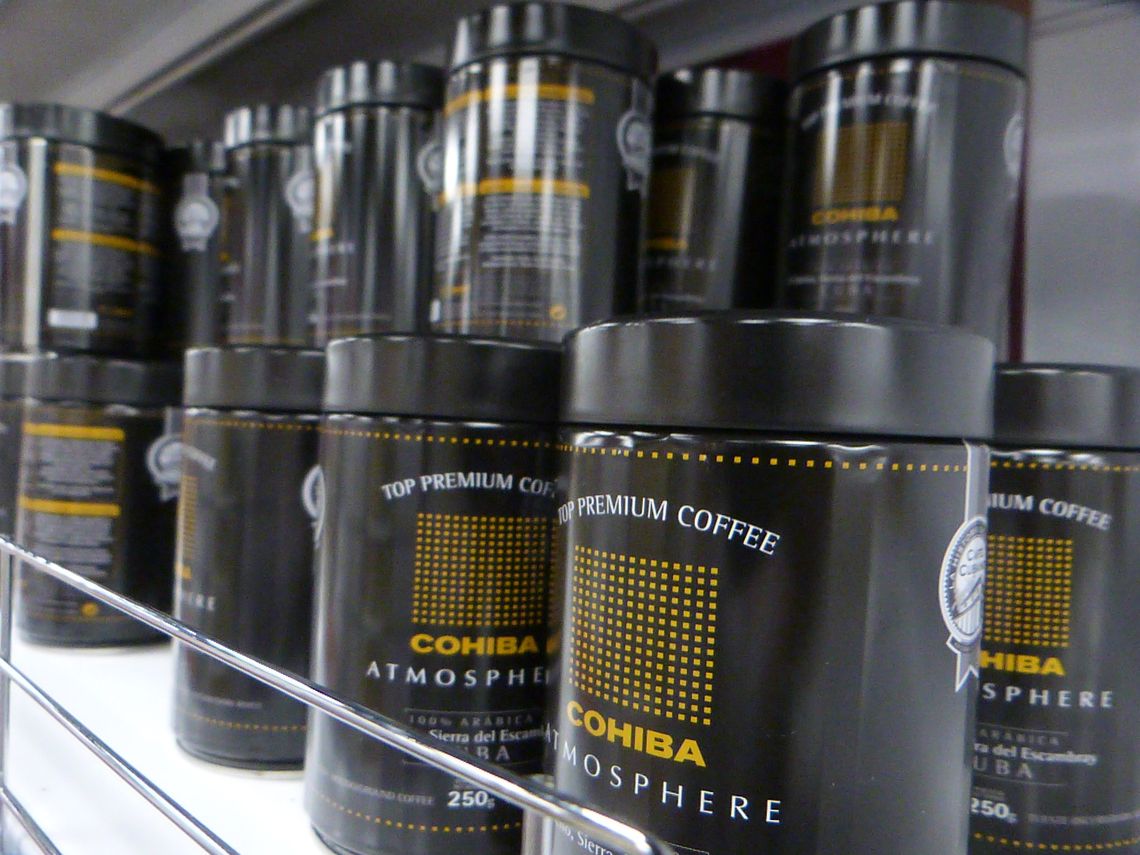
Technological interventions
Faced with this labor and input shortage, coffee-growing strategists have turned to technological initiatives such as more resistant grafts and organic biofertilizers.
In addition, international projects such as Prodecafé and MásCafé have provided essential tools to producers, including machinery and transportation.
Still premature, such efforts seek to increase yields and guarantee price ranges for the domestic market, according to the Granma feature article.
Founded more than a year ago, BioCubaCaffe S.A. leads initiatives to position Cuban coffee in international markets.
Michele Curto, president of the entity, emphasizes that its focus includes ensuring an equitable ratio between exports and domestic consumption, in addition to ensuring the delivery of basic necessities to coffee-growing communities.
Along these lines, the modules include peas, beans, rice, eggs, sugar, oil, and meat, at affordable prices for farmers, according to the executive.
The company seeks to increase by 50% the value of a can of premium organic coffee, both the Robusta and Arabica varieties.
Likewise, the entity has introduced innovations such as coffee aged in rum barrels and microfermentation to create premium products that are already present in more than 40 global markets.
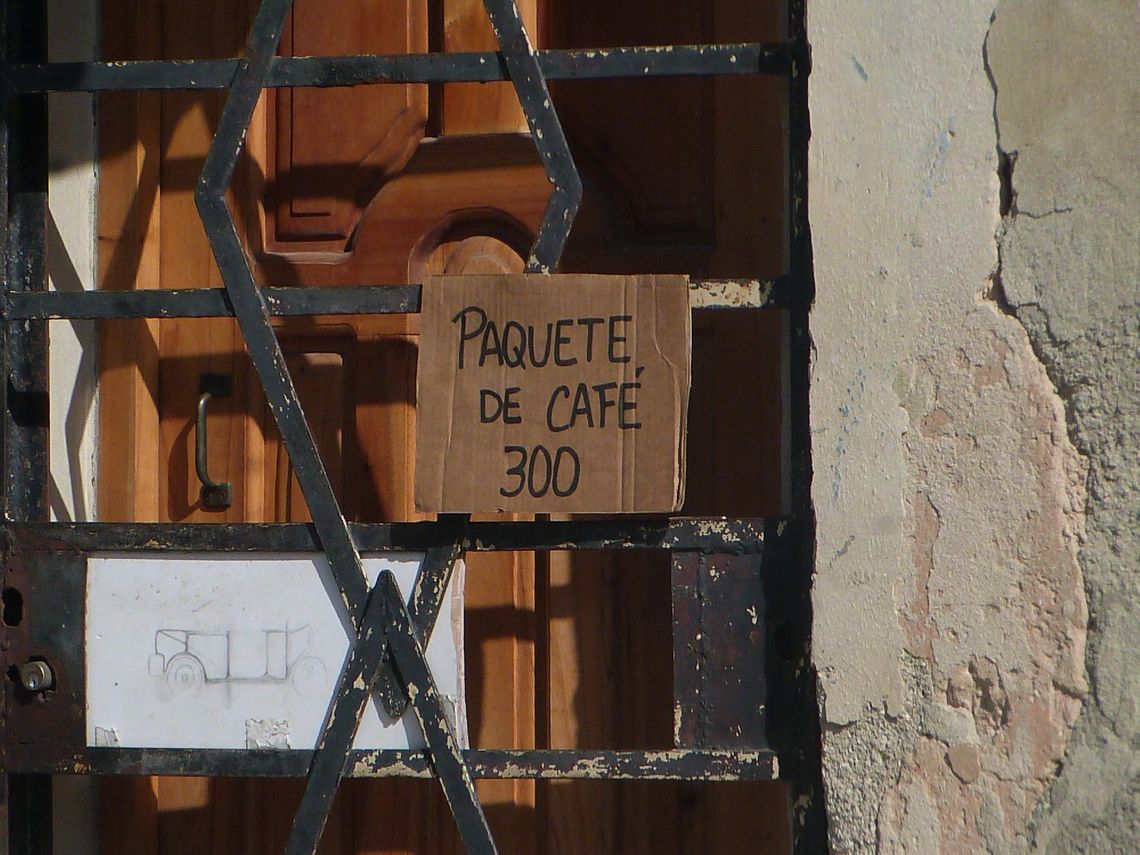
Structural challenges
Despite technological and commercial advances, structural problems persist that limit or hinder recovery in the short and medium term.
The low prices for a can of coffee discourage producers. As Nidia Calunga, a coffee grower with 38 harvests to her name, told Granma, “There is no correspondence between the effort required to produce coffee and the income obtained.”
Furthermore, difficulties with late payments force many farmers to turn to the informal market.
Infrastructure also represents a significant obstacle. The camps intended to house pickers are in deplorable condition.
In mountainous regions like Sumidero, where up to 100,000 cans of coffee were once collected annually, workers are now barely commuting from urban areas. This situation increases operating costs and reduces efficiency.
At the same time, bancarization in rural areas has had a very limited impact, and the lack of access to cash further complicates the harvesting and payment process for farmers.
“Those of us who can afford it invest our own financial resources, and that doesn’t add up. Payment wasn’t guaranteed in time to be made after the harvest for the camp heads,” one farmer criticized in the Granma report, on condition of anonymity. “It’s an open secret,” he concluded.
“The plan calls for 355,060 cans of coffee, and 229,212 have been collected,” stated Norlan Morán Rodríguez, deputy mayor for the Agri-Food Sector on the Tercer Frente Municipal Administration Council.
The official complained about the shortage of inputs. There are only a few essentials, “such as sacks, machetes, and files; when they are available, they are often offered at high prices by MSMEs, which makes the work of producers even more difficult.”
The strategy presented in 2023 to President Miguel Díaz-Canel includes seven key actions to recover coffee production.
These measures seek to balance domestic consumption with exports through international collaboration projects and advanced technologies.
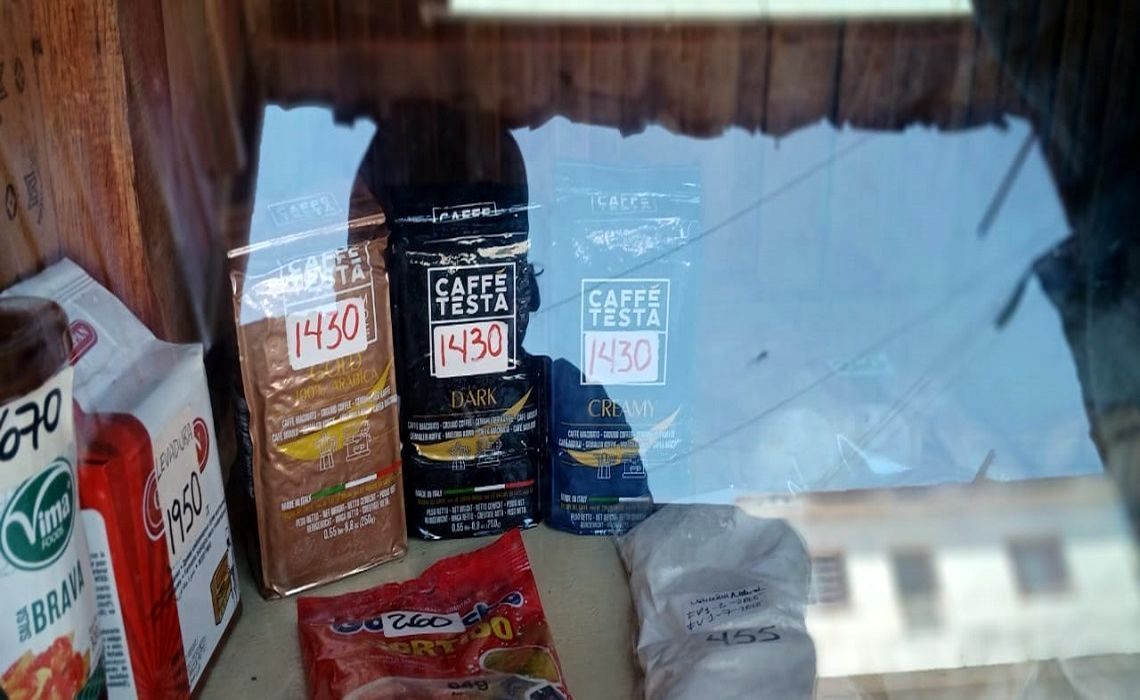
An unfollowed lead
Almost eight years ago, in June 2017, a report by the IPS news agency reported on the existence of two new biotechnology laboratories to produce high-quality seedlings, integrated into the coffee development program to increase exports.
One laboratory was located in Jibacoa, in the central province of Villa Clara, and produced seedlings for the entire central region, while the other was located in the Tercer Frente, and its mission was to supply seedlings to state-owned enterprises in eastern Cuba.
“These are high-tech laboratories that will be responsible for producing seedlings through somatic embryogenesis — a method of propagation using cells taken from portions of coffee leaves — from mother plants with high genetic potential,” explained Elexis Legrá, director of coffee, cocoa, and coconut for the state-owned Agri-Forestry Group.
The Granma article does not refer to these reproductive centers, and a cursory internet search revealed no updates.
“The aromatic customs of coffee” in Cuban culture
“You boiled the milk/and followed the aromatic customs of coffee,” writes José Lezama Lima in the poem “La mujer y la casa,” while his great mentor, José Martí, portrays the beverage as “a gentle fire, without flame or ardor” that “stokes and quickens all the agile blood in my veins.”
Nicolás Guillén, for his part, mentions it in his nostalgic poem “Canción carioca” (Carioca Song); “I think about coffee / (and I cry when I think about it). Ignacio Villa (Bola de Nieve) extols its flavor in the congo tango “Ay Mamá Inés,” composed by Eliseo Grenet; while in “La vida del estanciero” (The Life of a Rancher), verses by Cuban Francisco Poveda Armenteros, the nineteenth-century poet traces the routine of the rural worker who, upon waking, cigar in hand, “sees when the water is boiling / the coffee is quickly poured in / and a piece of raspadura.”
And in the visual arts, those large coffee pots from the 1950s and 1960s in neighborhood cafes (later eliminated by the 1968 revolutionary offensive) were exalted in the oil painting “Cafetera #1,” painted in 1960 by Ángel Acosta León, which can be seen in the permanent Cuban art gallery at the National Museum of Fine Arts (MNBA).
Likewise, another reference is Cafedral, from 2003, a sculpture by Roberto Fabelo made from aluminum coffee pots and mirrors, also exhibited at the MNBA.
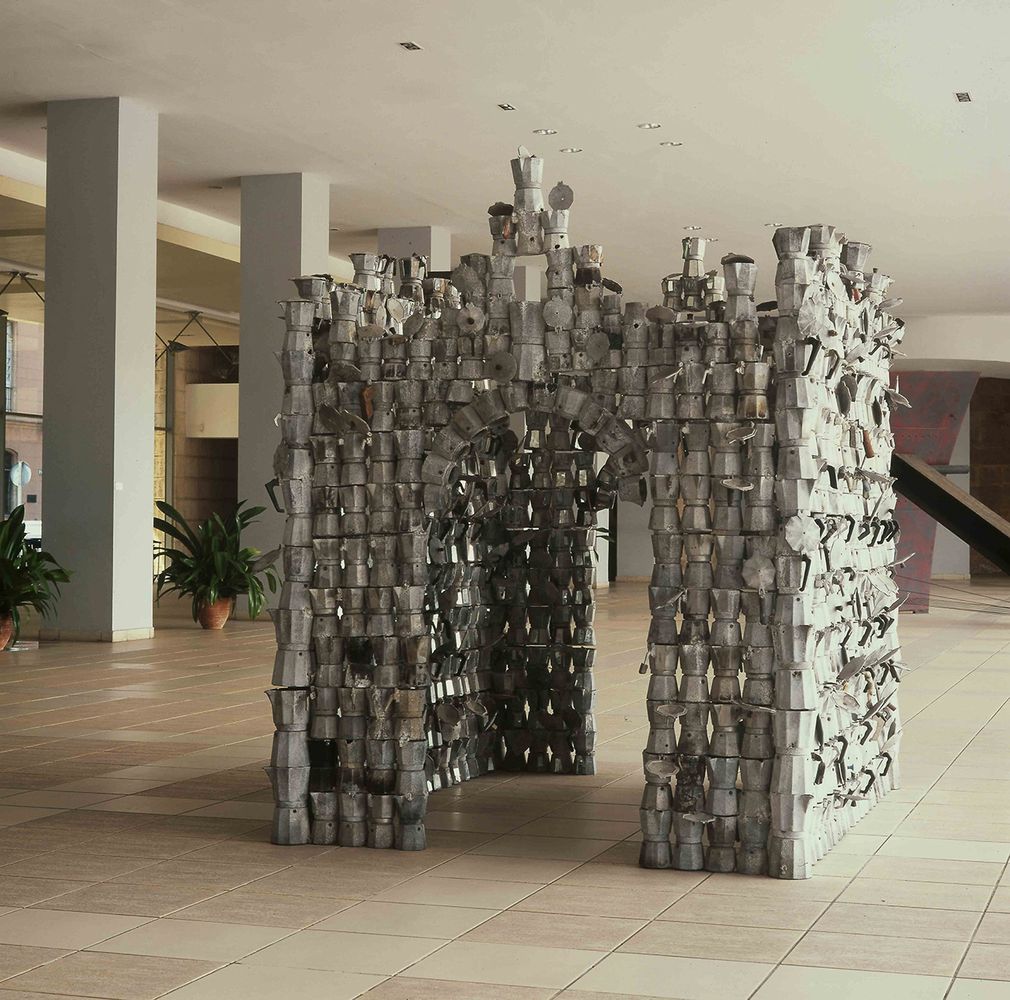
A heritage of millions: equal and different
Although there is no other beverage in the world that better reflects social traditions than coffee, its universality, however, does not negate the degree of national authenticity in each country and culture that embraces it as its own.
Since we are creatures of habit, the beverage gives us its ritualistic feasibility and its propitiatory virtue for gathering, celebration, relaxation, after-dinner conversation, and the intimate companionship that each person makes their own in their routines throughout life.
Consumption rituals produce meaning and are part of a symbolic social behavior that helps establish the knowledge, use, and utility of a product in the mind and sentimentality of the consumer.
Not having it, beyond the eating habit and stimulating service, is to be stripped of a communicative reality, an emotional connection with oneself and others that acts as a heritage of memory, rationality, and belonging.
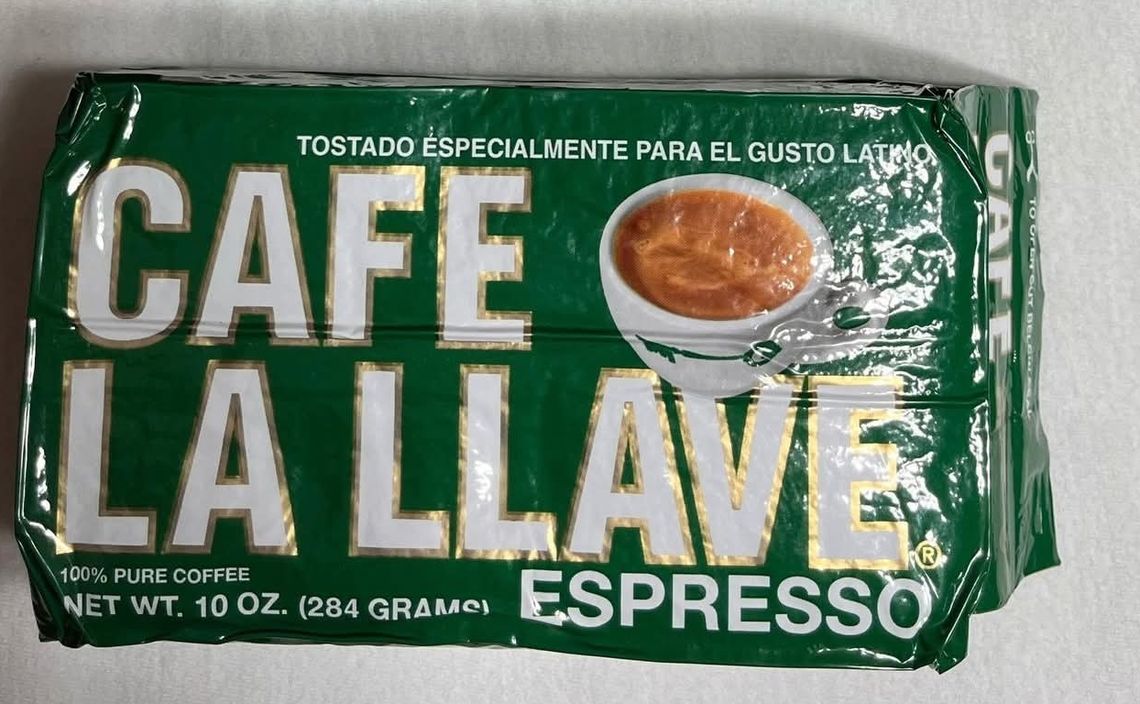
Import offers. La Llave is the leader
Most private coffee imports come from nearby markets such as Mexico, Colombia, or Florida, although there are also Spanish-made coffees, which may be relocated purchases from third-party markets.
In large online stores, businesses set up by the government with foreign capital and paid for by family and friends from the diaspora, a 284-gram La Llave espresso sells for 6.35 USD, slightly above the MSME price.
In the MSME circuit, prices fluctuate between 1,500 CUP and 2,000 CUP. At the top of the pyramid stands La Llave, a brand founded in Cuba by the Gaviña family in 1870 in the hills of Trinidad, but brought to the United States after the triumph of the Revolution in 1959.
Its creators settled in Los Angeles, California, where they maintained the tradition through Gaviña & Sons, Inc., where the beans are blended, roasted, and packaged in the company’s modern facilities in Vernon. The business also has distribution centers in Florida.
“It’s good, but nothing special,” says García when asked if he’s tried the coffee from the United States, the most expensive on offer, which went from 1,600 CUP to 2,000 CUP in just a few weeks.
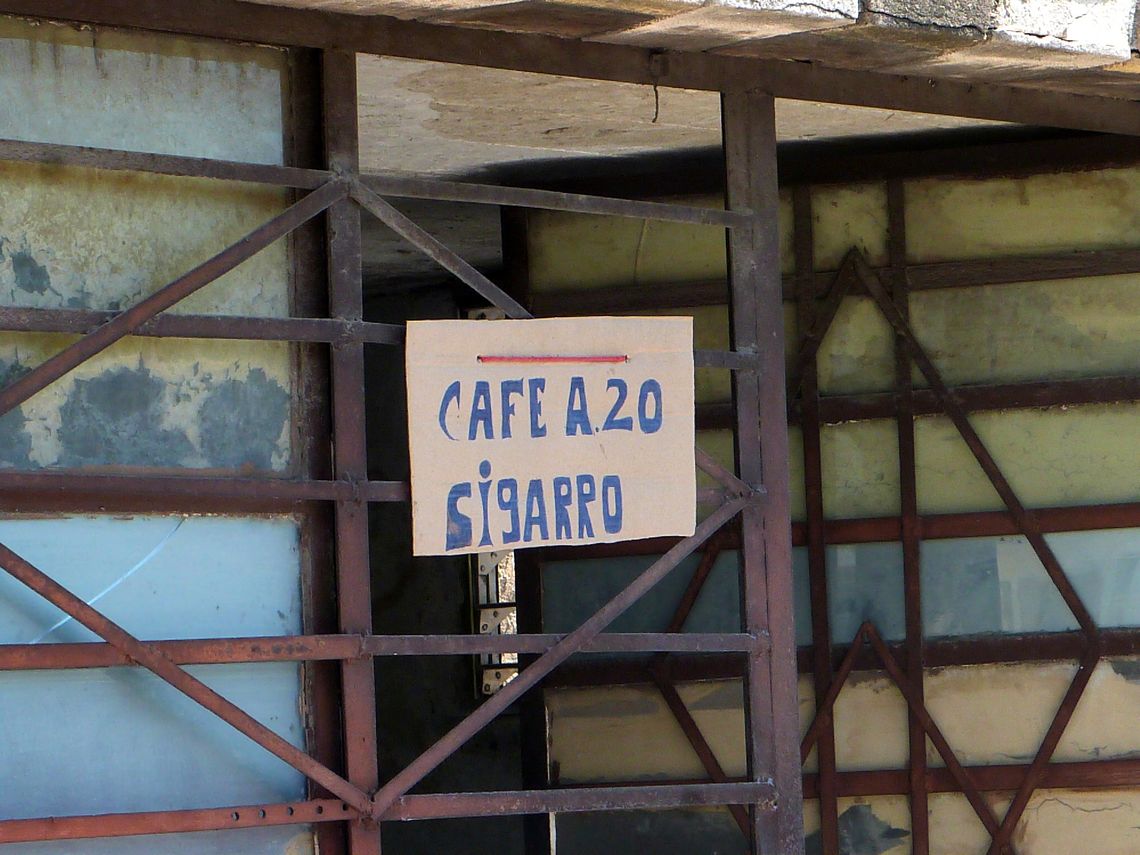
The rise and fall of a local experience
The former professor, turned community gardener, nevertheless praises the coffee he used to enjoy at a makeshift retail outlet on the avenue near his home, “until a year or so ago.”
“It was sold by a woman who brought it directly from eastern Cuba,” he recalls. “She did the whole process. From drying to roasting, she would open her window early in the morning with the thermoses and cigarettes, along with her little box of matches.… It had a flavor and aroma you could smell half a block away!” he smacks his lips.
The small glazed ceramic cup of coffee started at 5 CUP, but it climbed to 15 CUP. The drivers on the P2 line “stopped their buses” in both directions, and “people’s protests were useless,” especially during the pandemic. “Imagine, everyone wearing masks, fearing contagion, and the driver taking too long. That was really something.”
When the health crisis ended, the coffee business, little by little, did the same. It languished until it disappeared. No one knew the reasons, “but there was talk of a fine.” Now what can be seen from the window of the old coffee shop is a nail salon.
Later, the buses imitated a farewell in installments. “They don’t even cross here like they used to. They say there’s only one bus,” says García, more Pythagorean than ever, delivering an assessment of the situation based on figures, where the nearest cup of coffee costs 30 CUP — a luxury his pocket can’t afford — in a charming little room with a television, chairs with backrests, and ceiling fans that battle against the summers.
